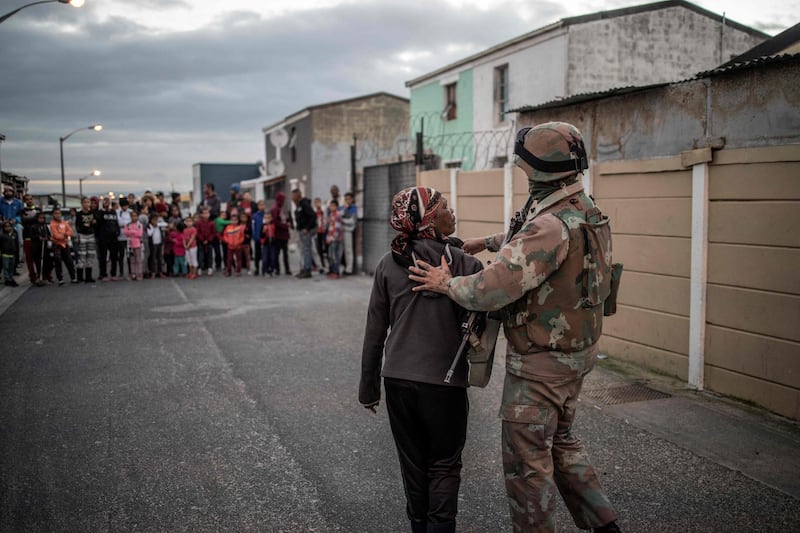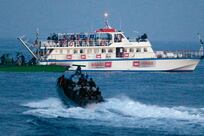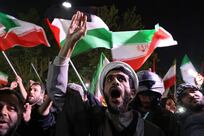Cape Town's beachfront promenade is easily one of the most stunning places in the world for a leisurely walk. The prom, as it is known locally, is a hotspot for runners, families and dog walkers. South African President Cyril Ramphosa owns a home just a few blocks away and is often seen embarking on a morning walk when he is in town. Staring out over the ocean in the shadow of Table Mountain, it is tempting to bask in the impossible miracle that is modern-day South Africa. From the depths of apartheid to one of the world's most progressive countries, the evolution of democratic South Africa is a marvel.
Nearly three decades ago, the country was mired in one of the most unequal and violent colonial experiments in recent history. Millions of South Africans were systematically deprived of their rights while a select minority enjoyed the full economic benefits of the country’s ample resources. South Africa was isolated, its archaic hierarchy belonging to another century.
While the apartheid system might have officially crumbled, the legacy of the social and political experiment has been difficult to unravel. Despite South Africa’s robust democracy, free press and fair elections, apartheid has shed its skin like a chameleon, yet still exists in purely economic terms. Cape Town’s idyllic promenade is just 30 kilometres from one of the most dangerous plots of land on Earth, the Cape Flats.
Decades of uneven development and lack of services have stifled the prospects of millions of South Africans of lifting themselves out of poverty. Vast shanty towns known as townships are plagued by crime, drugs and violence. The Cape Flats, a collection of shanty towns on a windswept and barren patch of land between Table Mountain and the salubrious regions of Stellenbosch and Franschhoek, are the epicentre of the uptick in violence.
Gang violence is so bad in the Cape Flats that the South African government took the unusual step of sending in military patrols. In wealthy areas on the Atlantic coastline like Camps Bay, the number of police per 100,000 residents was about 887 from 2013 to 2017, according to Bloomberg. In the Delft neighbourhood in the Cape Flats, the ratio of officers was only 168 per 100,000 residents over the same timespan, despite 445 murders being committed per 100,000 residents.
In images reminiscent of the apartheid struggle, military vehicles replete with assault rifle-toting soldiers now patrol the Cape Flats. This time, however, residents are cheering on the soldiers instead of throwing stones at them. After eight years of neglect by the government of former president Jacob Zuma, rival gangs have grown dramatically in size and power on the Cape Flats. An influx of weapons has made the turf battles deadly. The violence is merely a symptom of the larger challenge of equality in post-apartheid South Africa and the inability of the African National Congress (ANC) government to invest properly in the areas neglected for decades by apartheid.
Nearly three decades since the end of that legacy of racial division, South Africa remains one of the world’s most unequal societies. Unemployment is rife in the country, with 53 per cent of people aged between 15 and 24 out of work. Under Zuma, vital state entities such as the national electricity company were deprived of resources, due to a system of massive corruption known locally as state capture.
Without the revenue to perform upgrades, rolling blackouts are a common occurrence in the summer months. These factors have left South Africa’s investment grade hovering around junk status, further compounding the dire situation for citizens. Given concerns of a possible global recession, the South African economy is showing signs of worsening before it improves.
Cape Town’s violence is not only explained by the dire state of the South African economy. It is a vicious legacy of the apartheid government’s separate and unequal investment into the country. Any solution to the violence is therefore embedded in the complex politics of unravelling the apartheid legacy, which continues to this day. In Cape Town, the situation is compounded by the city’s geography.
Most of the residents living in the Cape Flats found themselves relocated there after being forcibly removed from their homes in the central areas of Cape Town by the apartheid government. Prime land in the central business district and along the Atlantic coastline was earmarked for white residents. Table Mountain became a physical barrier dividing the city. After the forced removals, gang violence flourished in the improvised shanty towns of the Cape Flats. Today, gangs vie for turf and citizens are caught in the crossfire. Not only is it dangerous to walk at night but children are killed by stray bullets in broad daylight.
While there are no official restrictions on where people can live in Cape Town today, economics ensure that residents of the Cape Flats have no ability to rent or purchase land in central areas. Civil society initiatives focused on transforming this economic and urban form of apartheid have failed to substantially transform dynamics on the ground.
What is unfolding in Cape Town is not isolated to South Africa and its particular history of institutionalised racism. The scourge of unequal development is a defining feature of many cities around the world. Cities like Baltimore in the US have seen massive protests and similar gang violence erupt as a result of unequal resource distribution. The same is true of Brazil’s major cities and even other African metropolises.
The Israeli-Palestinian conflict has close similarities to South Africa on many levels. Not only is Israel practicing its own form of separate and unequal governance by way of administering the occupation of millions of Palestinians in the West Bank and depriving them of their basic human and civil rights but through the decades-long occupation, Palestinian areas have been deprived of critical state resources. In the Israeli-annexed areas of East Jerusalem, this dynamic is on stark display.
Despite paying Israeli taxes, Palestinian residents in East Jerusalem areas such as Silwan, Sheikh Jarrah, and Kfar Aqab receive virtually no government services. Rubbish collection is minimal, roads are potholed, police serve little purpose and schools are deprived of funds. The result is unsurprising: criminals run amok, drugs are a major problem and stolen cars are trafficked through these areas.
Looking beyond the annexed areas, major Palestinian cities in the West Bank are struggling with revenue shortfalls. While settlements are connected by smooth modern highways, the roads in cities like Ramallah and Hebron are in a state of utter disrepair. The reality on the ground is far from surprising, given the fact that the occupation is ongoing. Occupying regimes seldom invest in the betterment of the occupied population.
Comparing Palestine under Israeli occupation and South Africa’s current woes highlights the importance of critically analysing the post-apartheid condition to better inform current attempts to resolve the Arab-Israeli conflict equitably. It is certainly popular to compare Israel with apartheid South Africa – and in many cases those comparisons are apt – but looking at the struggles of post-apartheid South Africa can provide crucial clues for a fair and just solution in the Middle East.
In other words, the infrastructure Israel has put in place to administer its control over Palestinian life will be extraordinarily difficult to unravel once the conflict reaches a conclusion, regardless of what that conclusion might look like. In the same way, as South Africa is forced to quell street violence with its military because of the uneven development left by the apartheid regime, Israelis and Palestinians will face innumerable challenges related to Israel’s unequal distribution of resources in the occupation of the West Bank and Gaza. The end of the conflict will only be the beginning of the fighting.





